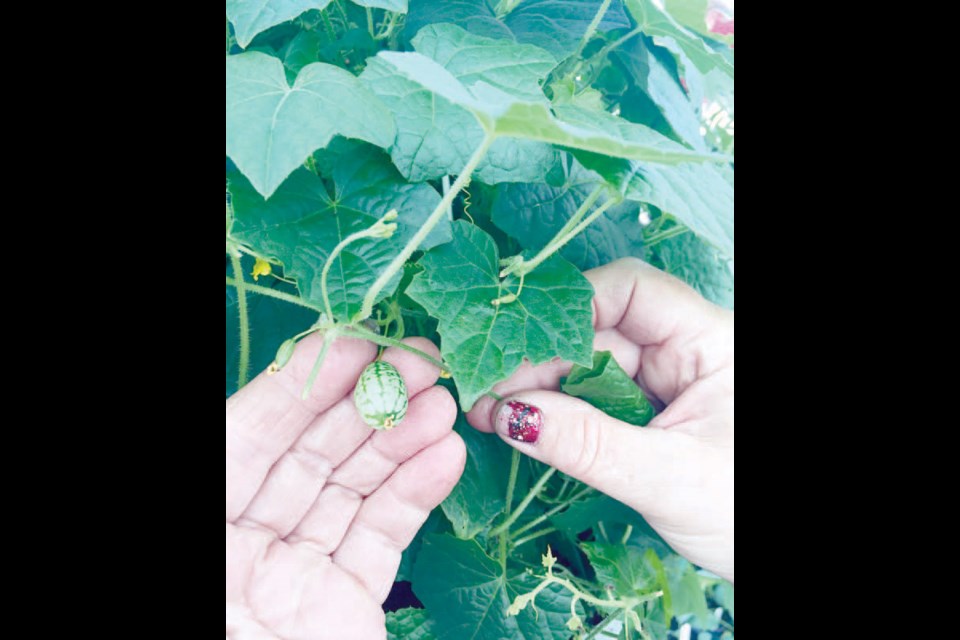A tiny melon from south of the border has been creating a buzz in the greenhouses and farmers’ markets in the area. The mousse melon and its unique flavour, with hints of cucumber and green fava bean, is a pest-free plant known for its rampant growth and productivity. Greenhouse owners are recommending this unusual vine to home gardeners looking for something new to add to their gardens.
The owner of Prairie Garden Greenhouse in Ketchen made the decision to offer something a little different to its customers, said Faye Alberts. “The mousse melon is a unique plant that is taking off very quickly. Most of my potted melon plants have been quickly purchased, followed by raving reviews. I do have a few plants left for avid creative gardeners.”
The melon’s most common name in Spanish is “sandĂita” (little watermelon), but it has a slew of other monikers in local dialects and Native American languages, many of which translate to “mouse melon.” These colloquial names are not surprising because the fruits resemble miniaturized watermelons, the perfect scale for a mouse-sized picnic.
The scientific name of this plant is Melothria scabra. It is native to Mexico and Central America, and was first described scientifically in 1866 by the French botanist Charles Victor Naudin.
“I should add in the same breath that Naudin’s Latin nomenclature for the melon is not engraved in stone because there is quite a bit of argument as to where this plant belongs by botanical classification, especially because it has very close relatives in Africa,” said Alberts.
If botanists have been late in coming to terms with the mousse melon, Native American peoples have not. It has been a staple of Mexican and Central American diets since pre-Columbian times, hence its great array of names in indigenous languages, she said. These people also use the melon in nonculinary ways, including in medicine, yet little of this information can be found in mainstream literature.
Few, if any, Mexican cookbooks written for North Americans include recipes on how to use mouse melons, yet seeds are readily available in the United States, Alberts. “Now is a good time for our cooks to catch up, especially vegetarian cooks looking for exciting, new ingredients.”
She said mousse melons are terrific in stirfries. They can be pickled just like French gherkins, eaten raw in salads or put up like Polish dill pickles. They also can be chopped and added to salsas for extra texture and flavour.
Ěý




